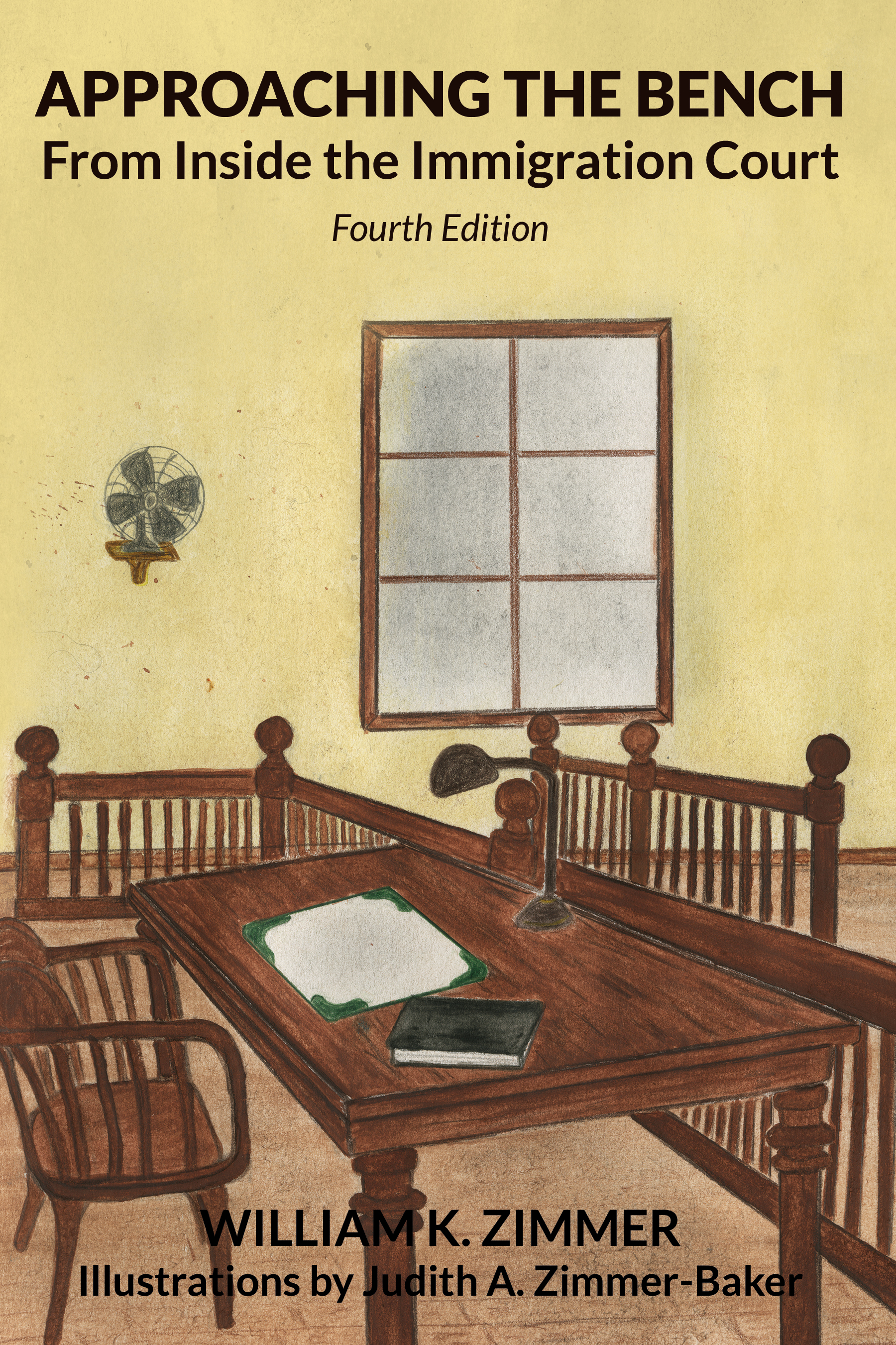Harmless Error

On December 6, 2021, the Fifth Circuit Court of Appeal determined that, in immigration cases, an appellate court may affirm an ultimate BIA decision involving error if there is no realistic possibility that (1) its conclusion would have been different absent the error or (2) it would reach a different conclusion on remand. Ahmed Elsayed Mahm Ibrahim v. Garland (5th Cir. 2021) No. 20-60936.
The procedural history, facts of record, holding and rationale of Ahmed Elsayed Mahm Ibrahim v. Garland (5th Cir. December 6, 2021) No. 20-60936 are as follows:
Case History
The Department of Homeland Security (“DHS”) issued a notice to appear (“NTA”) charging that the Petitioner is subject to removal under sections 237(a)(2)(A)(iii) and (E)(i) of the Immigration and Nationality Act, as amended (“the Act”) based on a conviction alleged to be an “aggravated felony” and a “crime of child abuse,” respectively.
The Petitioner then submitted an application to adjust his status under section 245(a) of the Act in conjunction with an application for a waiver of inadmissibility under section 212(h) of the Act.
The Immigration Judge sustained both removal charges, denied his relief applications and issued a removal order.
The Petitioner appealed to the Board of Immigration Appeals (“BIA”).
The BIA reversed the Immigration Judge’s decision and remanded the record of proceedings to the Immigration Judge with instructions to issue a new decision.
Upon remand, the DHS additionally charged that the Petitioner had committed a “crime involving moral turpitude” (“CIMT”) and was therefore subject to removal under section 237(a)(2)(A)(i) of the Act.
Ultimately, an Immigration Judge terminated removal proceedings.
The DHS appealed.
The BIA reversed the Immigration Judge’s termination decision, denied the Petitioner’s relief applications and ordered him removed from the United States.
The Petitioner then timely filed a petition for review with the Fifth Circuit Court of Appeal.
Facts
The record of proceedings under review reflects the participation of at least three Immigration Judges. Each Immigration Judge committed a least one error either by misconstruing material facts or by misapplication of law or both.
The Petitioner is a national of Egypt who enjoyed lawful permanent resident status in the United States.
In August 2017, the Petitioner pleaded guilty of committing “indecent behavior with a juvenile” under Section 14:81 of the Louisiana Revised Statutes for which he received a suspended sentence of five years at hard labor and was required to register as a sex offender.
The DHS introduced evidence of the Petitioner’s Section 14:81 guilty plea in the form of criminal-court minutes during his bond hearing, but did not introduce this evidence during the Petitioner’s removal proceedings which immediately followed the bond hearing.
Based on the evidence introduced at the bond hearing which was not part of the record of removal proceedings, the first Immigration Judge sustained two removal charges under sections 237(a)(2)(A)(iii) and (E)(i) of the Act (i.e. aggravated felony and crime of child abuse). None of the hearing participants pointed out or objected to this mistake.
A second Immigration Judge denied the Petitioner’s motion for continuance to apply for adjustment of status along with the accompanying waiver application under sections 245 and 212(h) of the Act; and, because the aggravated felony charge rendered the Petitioner ineligible for voluntary departure, ordered him removed to Egypt.
Upon review of the record of proceedings following the Petitioner’s appeal, the BIA remanded the case to allow the Petitioner to file his relief applications and with instructions to revisit the classification of the Petitioner’s offense as an aggravated felony.
Upon remand, the DHS filed an new charge under section 237(a)(2)(A)(i) of the Act alleging that the Petitioner’s offense should be classified as a crime involving moral turpitude ("CIMT").
Although the Petitioner confessed under oath that he had sent an image of his genitals to a girl who said she was thirteen or fourteen and admitted that he had pleaded guilty to “indecent behavior with a juvenile”—a crime under Section 14:81, a third Immigration Judge noted the failure of the DHS to introduce documentary evidence of the Petitioner’s guilty plea. Therefore, this Immigration Judge determined that the DHS had not proven the Petitioner was subject to removal by clear and convincing evidence, and terminated removal proceedings.
However, the third Immigration Judge did not consider the child abuse charge that had been sustained against the Petitioner. Furthermore, the third Immigration Judge misread the criminal record and in an alternative rationale found that the respondent’s offense could not be classified as a CIMT based statutory text that did not describe the offense for which the Petitioner had been convicted.
Upon considering the DHS appeal, the BIA determined that the Petitioner’s sworn testimony in addition to admissions in multiple briefs were sufficient to prove violation of Louisiana Revised Statutes § 14:81, even though the Petitioner’s guilty plea is not part of the record of proceedings. In addition, the BIA held that the determination of the first Immigration Judge that the Petitioner is subject to removal under section 237(a)(2)(E)(i) of the Act (i.e. child abuse) was not challenged in the first appeal and is the law of the case and cannot be reviewed.
The BIA ultimately denied the Petitioner’s applications for relief because he did not qualify for a favorable exercise of discretion, and ordered the Petitioner removed to Egypt.
Held
Petition for review DENIED.
Rationale
The Petitioner raised two claims in support of his petition for review:
- the BIA erroneously determined that his testimony and his attorney’s statements established that he had been convicted for “indecent behavior with a juvenile” in violation of 14:81 of the Louisiana Revised Statutes because:
- immigration regulations permit the government to use only documentary evidence to prove an alien’s criminal conviction;
- relying on his testimony to prove a conviction violated due process because it was not probative enough to be admissible; and,
- testimony, especially when given during the relief stage of removal proceedings, is not reliable enough to establish a conviction by clear and convincing evidence (as required under section 240(c)(3)(A) of the Act, see also 8 C.F.R. § 1240.8(a)).
- the BIA erroneously held that his removal charge under section 237(a)(2)(E)(i) of the Act (based on a crime of child abuse) was the law of the case because:
- the BIA never ruled on that question itself, or
- prohibited an Immigration Judge from revisiting it on remand.
For its part, the DHS asserted that the Petitioner had not exhausted the issues he raised, noting that the Petitioner had never contested his removability for committing a crime of child abuse before the Immigration Judge or the BIA. Therefore, according to the DHS, the Fifth Circuit Court of Appeal did not have jurisdiction over any issues raised by the Petitioner.
Jurisdiction
The Fifth Circuit Court of Appeal for the most part disagreed with the DHS that the Petitioner’s issues had not been exhausted, observing that “[I]f the BIA deems an issue sufficiently presented to consider it on the merits, such action by the BIA exhausts the issue as far as the agency is concerned . . . .” Mirza v. Garland, 996 F.3d 747, at 753 (5th Cir. 2021) (quoting Lopez-Dubon v. Holder, 609 F.3d 642, at 644 (5th Cir. 2010)).
The Fifth Circuit Court of Appeal further indicated that it does not matter which party brings an issue to the attention of the BIA, and pointed out that the DHS had contended that Petitioner’s testimony and admissions in his briefs established the Petitioner’s conviction by clear and convincing evidence, and the BIA had agreed.
The Fifth Circuit Court of Appeal reached the same conclusion relating to the Petitioner’s “law of the case” argument and the Petitioner’s claim that regulations require documentary proof of a conviction by sufficiently raising the issue in a brief to the BIA.
See Ahmed Elsayed Mahm Ibrahim v. Garland, pp. 7, 8 (5th Cir. December 6, 2021) No. 20-60936.
However, the Fifth Circuit Court of Appeal determined that the Petitioner had forfeited his contentions that the BIA could not consider evidence introduced during the relief stage of removal proceedings to determine whether he was removable in the first place and that his testimony was not probative enough to be admissible because those contentions are "brand new." Neither the DHS nor the Petitioner had asked the BIA to resolve them. As a result, the BIA never had "the opportunity to apply its specialized knowledge and experience to the matter" and "resolve a controversy or correct its own errors before judicial intervention." Lopez-Dubon v. Holder, 609 F.3d 642, at 644 (quoting Sidabutar v. Gonzales, 503 F.3d 1116, at 1122 (10th Cir. 2007)).
See Ahmed Elsayed Mahm Ibrahim v. Garland, pp. 6, note 5, 8.
Harmless Error
The Fifth Circuit Court of Appeal held that any errors identified by the Petitioner were harmless, based on the following rationale:
- Although an appellate court may “uphold agency action only on the grounds that the agency invoked when it took the action.” Maniar v. Garland, 998 F.3d 235, at 240 (5th Cir. 2021) (quoting Michigan v. EPA, 576 U.S. 743, at 758 (2015)), a limited exception exists with regard to immigration cases. See Luna-Garcia v. Barr, 932 F.3d 285, at 291 (5th Cir. 2019).
- Specifically, even where the BIA makes a mistake, an appellate court may affirm the BIA’s ultimate decision if “there is no realistic possibility” that (1) “[its] conclusion would have been different absent the error” or (2) “[it] would reach a different conclusion on remand.” Maniar, 998 F.3d at 240.
-
- Any errors in finding that the Petitioner had violated 14:81 of the Louisiana Revised Statutes were harmless, because there is no realistic possibility that the BIA would change its decision on remand. The BIA could have taken administrative notice of the relevant facts contained in the Louisiana criminal court minutes because the accuracy of such facts were not in dispute and could readily be determined from an official government source, even though outside the record.
- Any errors the BIA committed by concluding that the Petitioner was subject to removal for committing a crime of child abuse were harmless. Because there is no realistic possibility that that the conclusion would have been different if the BIA had determined the child abuse finding was not the law of the case. In short, the Petitioner repeatedly failed to contest the child abuse charge, so the BIA would almost certainly have held that he forfeited his challenge to it.
See Ahmed Elsayed Mahm Ibrahim v. Garland, pp. 9-11.
Commentary
You will always win a coin toss if the other participant in the coin toss is compelled by rule of law to agree to your declaration that “Heads I win and tails you lose.” In immigration litigation, it often feels like the government always wins, even if the score is tied.
Perhaps, a court system that is short staffed and overwhelmed with a back log of about 1.5 million cases needs a friendly legal environment in order to survive.
It seems fair to surmise that if Ahmed Elsayed Mahm Ibrahim v. Garland had been a criminal case, Mr. Ibrahim would have prevailed based on due process related procedural defects. Perhaps, the reader can think of other errors that would be fatal to the government’s cause.
Nevertheless, removal proceedings are civil proceedings. Long ago the United States Supreme Court declared that deportation, as a matter of law, is not punitive:
The order of deportation is not a punishment for crime. It is not a banishment, in the sense in which that word is often applied to the expulsion of a citizen from his country by way of punishment. It is but a method of enforcing the return to his own country of an alien who has not complied with the conditions upon the performance of which the government of the nation, acting within its constitutional authority, and through the proper departments, has determined that his continuing to reside here shall depend.
Fong Yue Ting v. United States, 149 U.S. 698, at 701 (1893). See, also, Pereida v. Wilkinson, Acting Attorney General, 592 U.S. ____, at 15 (2021) (comparing the burden of proof in criminal proceedings to the burden of proof in “civil immigration proceedings”); INS v. Lopez-Mendoza, 468 U.S. 1032, at 1046 (1984) (“Important as it is to protect the Fourth Amendment rights of all persons, there is no convincing indication that application of the exclusionary rule in civil deportation proceedings will contribute materially to that end.”); Harisiades v. Shaughnessy, 342 U.S. 580, at 594 (1952) (acknowledging deportation proceedings as civil proceedings).
So what can be learned from Ahmed Elsayed Mahm Ibrahim v. Garland?
It seems that many issues at the appellate level are forfeited by failure to bring them to the attention of the Immigration Judge and the BIA. The Fifth Circuit Court of Appeal recently dismissed an issue as unexhausted, in the absence of a motion to reconsider, even though the issue which the BIA did not specifically address had been raised in an appeal to the BIA. See Sergio L. Tabora Gutierrez v. Merrick Garland, at page 12 (5th Cir. August 31, 2021) No. 19-60408; Avelar-Oliva v. Barr, 954 F.3d 757, at 766 (5th Cir. 2020).
Make sure to raise any issue for which appellate review might be sought to the Immigration Judge and the BIA. If the issue is overlooked or ignored by administrative decision makers file a timely motion to reconsider.
The Petitioner forfeited two issues in Ahmed Elsayed Mahm Ibrahim v. Garland by failing to exhaust them before the BIA: 1) that the BIA could not consider evidence introduced during the relief stage of removal proceedings to determine whether he was removable in the first place, and 2) that statute and regulation require documentary proof to establish a conviction.
Another thought that comes to mind is that prudence advises against admitting anything in an appellate brief that is not absolutely necessary, and even if necessary don’t admit it!
Finally, there usually seems to be little advantage to admitting allegations and any removal charge based on a criminal offense during pleadings. An immigration practitioner should remain circumspect about admissions and concessions.
This litigation posture is ethical, as long as an attorney does not mislead the decision maker about the facts or the law. Even a decision based on precedent case law is subject to challenge. Precedent opinions that are wrong will yield to sound argument over time. Facts, however, remain stubborn.
Also, the BIA has held that silence alone, with or without a grant of immunity from prosecution, is insufficient to establish alienage by means of an adverse inference. Matter of Guevara, 20 I&N Dec. 238, at 242 (BIA 1990).
Shifting the burden of proof to the respondent in removal proceedings to establish time, place and manner of entry under section 291 of the Act can only occur after the DHS establishes a prima facie case of alienage. Matter of Guevara, at 243.
Alienage may not be at issue relating to a removal charge involving a criminal offense, but denying the allegation and charge will require the DHS to carry its burden of proof and it will not be able to rely on the respondent’s admission or concession. If the Immigration Judge sustains a removal charge based on an adverse inference the charge will be more challenging for the DHS to defend on appeal, especially in the absence of corroborating evidence.
However, adverse inferences based on silence in the context of relief applications and the exercise of discretion can be much more dangerous for the relief applicant. The DHS is likely to argue with considerable force (regardless of a possible sincere notion of wrongful conviction on the part of the relief applicant) that failure to admit guilt is a condition precedent to establishing rehabilitation, good moral character, qualification for the favorable exercise of discretion, etc..
In short, don’t admit anything that you want to contest.

